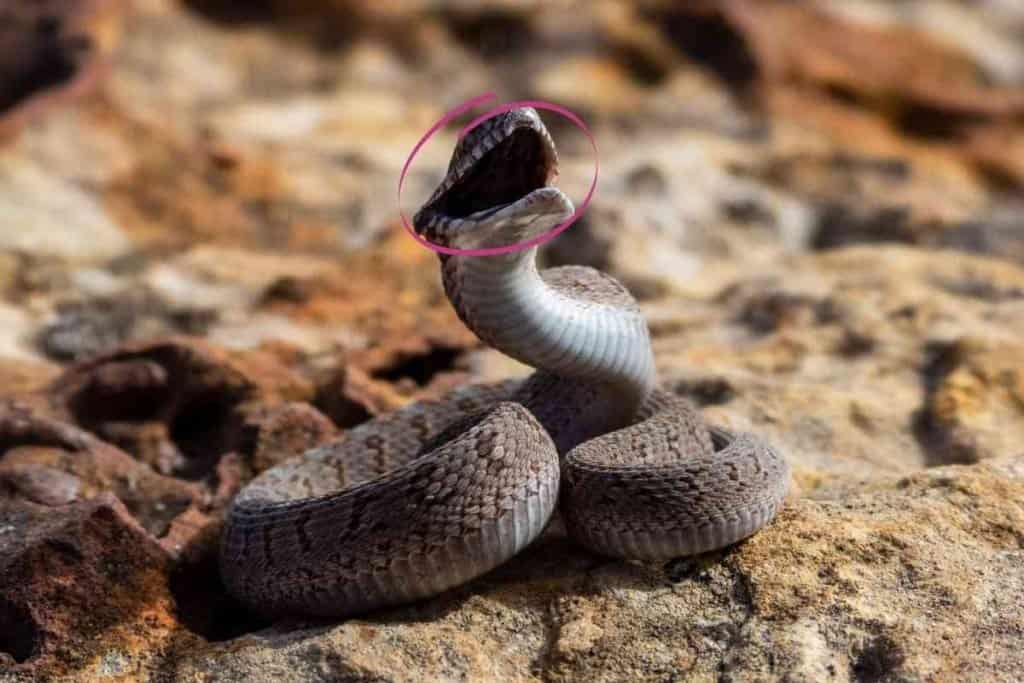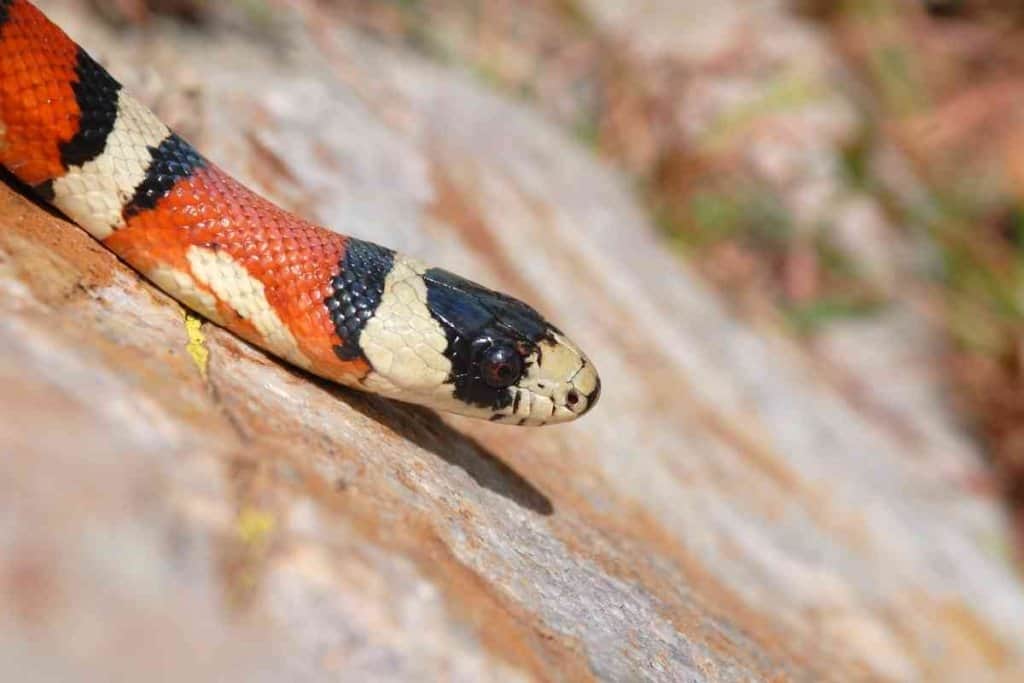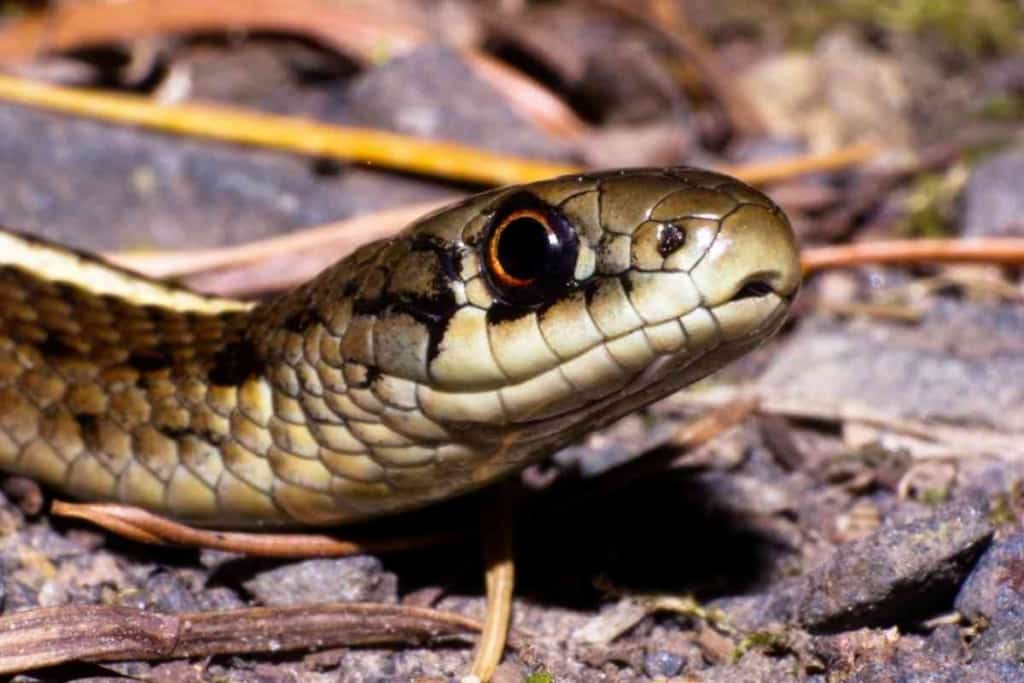7 Best Pet Snakes With No Teeth
Some people fear keeping snake pets because they may bite them. However, there are snake breeds with no teeth that you can keep without fear of bites.
While some individuals fear snakes, others love their pet snakes. Understanding these potentially fatal creatures is crucial when coexisting with these wild creatures, regardless of your opinion on snakes. So, research well before deciding on the species to keep as a pet snake.

Are any pet snakes toothless?
Dasypeltis, Milk Snake, Indian Egg-Eating Snake, Green Snake, Water Snake, Garter Snake, and Rat Snake are all non-venomous snakes and toothless snakes that make excellent pet snakes. Under the right conditions, these snakes can live with you for over ten years.
Although some snakes may have tiny teeth, they are still correctly classified as snakes with no teeth because the teeth are often not very significant. Additionally, even with the small teeth, the snakes still are non-hazardous.
Continue reading if you’re fascinated by snakes and want to make one your new best friend, but are worried about getting the wrong breed of snake for you.
7 Pet Snakes with No Teeth
1. Dasypeltis
Dasypeltis gansi is an egg-eating snake with no teeth. Due to their lack of teeth to consume living prey, they survive entirely on eggs. They have protrusions in their mouths, which they use to crack eggs and the unhinging jaw that enables them to swallow an egg.
While numerous other snake species consume bird eggs and other reptiles, none is as particular as the egg-eating snake.
Defense Mechanism
The Dasypeltis’s lack of additional defenses pushes it to rub its scales, producing a hissing sound collectively. The Dasypeltis gansi is perfect for confinement due to its peaceful nature. Many people adopt these snakes as pets because they cannot hurt them with a bite or poison.
Habitat
Dasypeltis is a species native to the African continent. Dasypeltis comprises seventeen distinct species that favor woody and forested regions with a high bird population. Because eggs are their sole food source, it is vital to have many birds around.
Dasypeltis is a genus of seventeen widespread species throughout Africa and typically remain inside their territory.
Eating and Hunting
The snake’s ability to climb contributes to their eating habits. These snakes are among the world’s finest climbers, quickly ascending rocks and trees. Coupled with their strong sense of smell, these snakes can nearly smell eggs in far trees.
They can tell if an egg has matured too much to eat or rotten without breaking it open due to their acute sense of smell.
As they discover an egg, the situation becomes quite exciting. The serpent begins by clamping its jaws around the egg and squeezing it down into its esophagus. Although all snakes have flexible jaws, egg eater’s mouths and necks have extra-stretchy ligaments, which offers them an edge.
Additionally, because egg-eaters lack teeth, they have no difficulty swallowing the egg.
2. Indian Egg-Eating Snake
The Westermanni, or Indian egg-eating snake, resembles the Dasypeltis. This glossy brown or black snake is speckled with blue-white dots and has a cream stripe flowing down its back. This snake is exceptionally skilled at negotiating dense vegetation and strikes a lousy attitude to deter potential attackers.
Biting assailants is fruitless because the snake lacks teeth.
Behavior
The nocturnal or diurnal Indian egg-eating snake is a terrestrial snake that scales plants with incredible talent. It lifts the anterior part of its body to protect itself, resulting in ‘S-shaped coils.
Diet
The Westermanni snake consumes solely undeveloped bird eggs. It has several distinctive modifications, including extensions of the cervical vertebrae that extend into the gut, vertebral hypophysis, and aid in egg cracking.
3. Milk Snake

The Lampropeltis is a well-known snake attributed to its vibrant colors and pleasant demeanor. These snakes are popular with animal owners, and they are occasionally referred to as a fan favorite due to their ability to reproduce successfully in captivity.
While some may fear the milk snake due to its king snake ancestry, they are harmless. Because milk snakes lack fangs and visible teeth, a bite from one is entirely harmless to humans.
Appearance
Milk snakes come in various shapes and hues, but all have banded coloring. These bands might be white, black, or red, and it is typical to see alternating bands of various colors. Separate the vibrant bands using yellow, white, or orange.
The bolder bars are further defined in black. Additionally, numerous milk snakes have a soft Y or V curve to their necks.
Habitat
Milk snakes thrive in various habitats due to their extensive range. Although they favor forested settings, they can also be found in fields, farming zones, rocky outcrops, and barns.
The serpents prefer to hide during the day on boards, beneath rocks, or in the barn’s deepest nooks and crannies.
Behavior
Milk snakes are nocturnal, solitary reptiles mostly active around twilight and night. They tend to venture out throughout the day if the weather is inclement or if it is below freezing. However, the snakes hide beneath logs, rocks, or caves on hot days.
Hunting and Preying
Milk snakes are carnivores that prey on other snakes and animals. In agricultural contexts, rats, mice, voles, and other rodents are common prey. They also tend to devour their poisonous coral snake doppelgängers on occasion.
Milk snakes are mighty when it comes to constriction. They encircle their prey until the victim’s heart stops beating because of a lack of blood flow and then consume it in full after the prey has died.
4. Green Snake
Green snakes are classified into two subspecies:
The Rough Green Serpent
Opheodrys aestivus is a perennial herbaceous plant that flourishes in South Carolina and Georgia. The snake can quickly move through plants and survives by eating insects and small worms.
They are not entirely toothless, as they have tiny, slightly curved teeth that enable them to devour their nutritional requirements.
The Smooth Green Serpent
Opheodrys vernalis is found in the Appalachian region. Although this snake is not venomous, it bites occasionally.
Both smooth and rough green snakes have quiet personalities that make them ideal for captivity and first-time snake owners.
Diet and Nutrition
The green snakes are carnivorous. The insects and spiders they consume include harvestmen, spineless caterpillars, moths, snails, ants, slugs, and worms.
Population and Population threats
Predators that hunt smooth green snakes include the Red-tailed hawk, bears, foxes, raccoons, and cats.
Although there is no estimate of the Smooth green snake’s overall population, it is ubiquitous and extensive throughout its habitat. The IUCN Red List has downgraded this species to Least Concern, and its population is stable.
Environment-Specific Niche
Smooth green snakes contribute significantly to the ecology of their habitats by regulating the populations of their prey species, which provides food for surrounding predators.
Mating Habits
Females deposit eggs in two clutches of four to six eggs from June through September, and smooth green snakes mate in mid-spring or summer. Females lay their eggs in various locations, including rat burrows, sawdust heaps, rotting plant mounds, and decaying logs.
The female Smooth green snakes may nest collectively in the habitat’s northern portions.
5. Garter Snake

The Thamnophis, or Garter snake, is a prevalent species found in Central and North America. These serpents are highly adaptive and can survive in various habitats. Garter snakes are ordinarily docile but will curl and strike if provoked.
Due to its relatively few fangs, their attack is not considered highly dangerous to humans.
Physical Characteristics
Garter snakes come in various colors, but most have three stripes, one down the middle of the back and on each lower side of their frame. For most species, the lines are yellow or green. However, this depends on the species and geographic region.
The snakes with intricate splotchy patterns between their stripes appear to be checkered.
Habitat
Garter snakes are omnivores, adapting to a variety of settings. They love habitats near water but are also found in meadows, forests, and grassy knolls, particularly in the arid West.
The snakes can be found mainly in the Atlantic through the Pacific Oceans and southern Canada.
Habits
Garter snakes are most energetic during the day, swift, and prefer to stay on the ground; nevertheless, certain species will ascend into shrubs or vines. It is also easy to notice that certain species move higher than others in shrubs.
Diet
Garter snakes prey primarily on amphibians, fish, and earthworms but may also consume other species. These serpents capture their prey using their powerful jaws and reflexes. Like most other snakes, Garter snakes consume their food on their whole.
Certain species’ saliva contains a tiny neurotoxin that induces paralysis, making tiny prey more comfortable to swallow.
On the other hand, the giant prey may be pulled and bitten until death occurs due to the trauma.
6. Water Snake
Nerodia, or water snakes, are widely misunderstood. Due to their penchant for living in water, these snakes are frequently confused with cottonmouths. However, the common water snake is benign and non-venomous, and its bites merely leave a scratch.
The water snake is among the best snakes to keep as a pet. They require no maintenance, pose no danger to people, and are even acceptable for toddlers to handle. Although these snakes are typically toothless, they have little fangs and bite when provoked.
Behavior
Water snakes have a negative reputation for being aggressive. When touched, they bite or hiss as a kind of protection. As a result, they make poor pets. If these serpents are not dealt with properly, they may become hostile when confronted.
Water snakes enjoy climbing trees and resting on the branches above the water. If startled, they will dive into the water. They are primarily diurnal and solitary animals, but they may sometimes hunt at night.
They hibernate during the winter and are sociable in the following hibernation days. During this time, groups are welcome to bask together.
When threatened, glands near the edges of water snakes release a musky material that can be discharged. Water snakes tend to poop and puke when frightened or annoyed.
Consumption and Hunting
Water snakes prefer to feed close to or in bodies of water. As a result, amphibians and fish are frequently their common prey. The snakes are also like sluggish fish. Once they reach roughly 1.5 feet, large water snakes switch from fish to giant frogs and amphibians. Smaller water snakes, however, remain mostly fish eaters.
Water snakes consume their prey alive. They wait in shallow waters with their mouths wide open for prey to swim past them, then lock their jaws around them.
7. Rat Snake
While the rat snake has teeth, it is included on this list due to the low level of harm caused by these teeth. Due to the rat snake’s small size, its teeth barely scrape the flesh. When bitten by a rat snake, the bite usually shows numerous scars on the skin.
The Elaphe is a prevalent snake found throughout North America. The rate snake, like other snakes, may unhinge their jaws to swallow its preferred prey, rats.
Their tiny, needle-like teeth assist them in this activity by helping ingest the rats. Because rat snakes are constrictors, they do not require teeth to consume their prey. Rat snakes are popular for snake enthusiasts because of their low maintenance requirements.
Appearance
Rat snakes are available in an array of colors and patterns. You can find stripes, blotches, a blend of the two, or one solid color.
The species are available in a range of hues, including red, black, brown, grey, yellow, and black-and-white.
They feature a wedge-shaped head, keeled scales, and slender bodies. Their pupils are round like those of other nonvenomous snakes.
Habitat
Rat snakes are distributed throughout North America, from Central America to Southern Canada. Their environments vary with species.
Habits
The behavior of rat snakes varies with species. Like the black rat snake, certain species are renowned for being shy but aggressive when cornered.
When they are approached by a predator or touched by a person, they emit an odiferous musk that they spread about with their rear.
